
views
Eating Certain Foods

Eat pineapple. Pineapple is one fruit that may trigger labor. It contains bromelain, which may help soften and “ripen” the cervix. This is a key stage in bringing on labor. Eat pineapple plain, drink pineapple juice or make a fruit smoothie with pineapple.

Eat licorice. Black licorice might stimulate labor. Get natural licorice that contains less sugar. You can also get licorice in pill form. Licorice can stimulate cramps in the bowel by having a laxative effect. Bowel cramps may help induce uterine cramps.

Eat plenty of fiber. Foods that are rich in fiber will help you avoid being constipated. If you are constipated, you will have a full bowel or rectum, which takes up space that the baby may need to move lower down in your body. Eat plenty of fruits and vegetables during the last few weeks of your pregnancy. Eating prunes, dates, and other dried fruits can help as well.

Drink red raspberry leaf tea. This tea can strengthen and tone the uterus, and can help the muscles start to contract. Brew a cup by pouring 6 fluid ounces (180 mL) of boiling water over one tea bag. Let it steep for 3 minutes. Let it cool and drink. Make red raspberry leaf iced tea in the summer for a refreshing drink.
Positioning Your Body
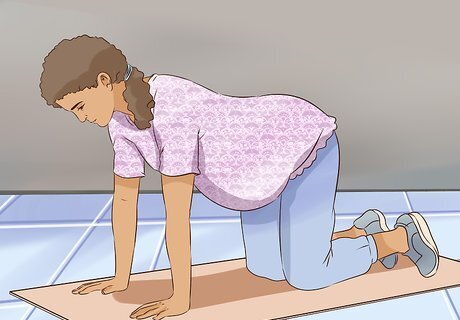
Rest on all fours. Resting on all fours may help the baby into a good position. When the baby’s head puts downward pressure on your cervix, the cervix starts to efface, or shortens and thins out. Resting on all fours for 10 minutes at a time, several times a day, can help move the baby’s head into the optimal position.
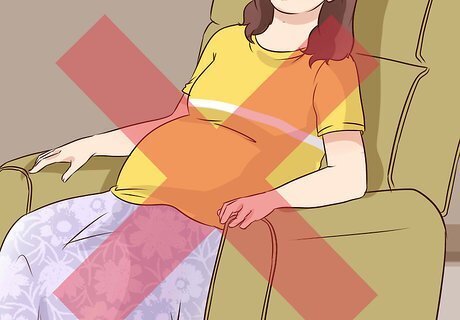
Don’t recline backward on the couch. You are probably exhausted at this late stage of pregnancy and ready to just relax. But reclining or sitting back on the couch can be counterproductive to making sure the baby is in the right position for labor. Instead, lay on the couch on your left side, slightly rolled forward. Prop yourself up with cushions to make it comfortable.

Bounce on a birth ball. A birth ball is a large bouncy ball (they are also used in exercising) that can help you sit comfortably towards the end of pregnancy. You can also use this ball to help you cope with labor. Sitting or bouncing on the ball, while spreading your legs wide, can help the baby move downward.
Preparing Your Body for Labor
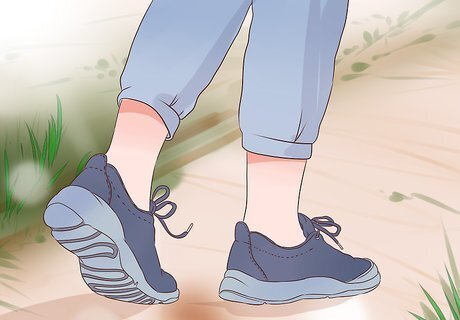
Go for a walk. Walking can help stir the baby into moving downward in your body. Once the baby’s head puts pressure on the cervix, labor isn’t far behind. Try walking for 15-20 minutes. Getting out in the fresh air can also be beneficial. Try walking up a steep hill. This will force your body to lean forward at an angle. Leaning at a 40-45 degree angle can help the baby move in the right downward direction.

Have sex. Having sex with a partner can help release prostaglandins, which are similar to hormones in your body. Prostaglandins can bring on labor. Sperm from an ejaculation inside the vagina can help to soften and dilate the cervix, also readying the body for labor. Having an orgasm stimulates prostaglandins, so if you don’t feel comfortable having sex, you can still have an orgasm on your own. Do not have sex if your water has already broken, as this can put you at risk for infection.
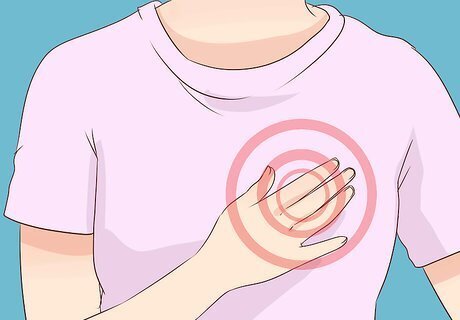
Stimulate your nipples. Nipple stimulation is another way to induce uterine contractions. Use your thumb and forefinger to roll the nipple for 2 minutes. Give it a rest for 3 minutes. Continue this process for about 20 minutes. If you don’t feel any contractions, increase the rolling part to 3 minutes, with the rests lasting 2 minutes. Use olive oil on your fingers to prevent irritation.

Try castor oil. Ingesting castor oil causes intestinal cramps and stimulates the bowels. By contracting intestinal and bowel muscles, you may cause uterine contractions. These methods will cause diarrhea, which can be extremely uncomfortable. Mix 2 fluid ounces (59 mL) of castor oil in a glass of juice. Drink it all at once. Alternately, you can try an in-home enema. However, use this method only once, and proceed with extreme caution. It can clear out your bowels and leave you quite dehydrated and uncomfortable.
Relaxing your Body
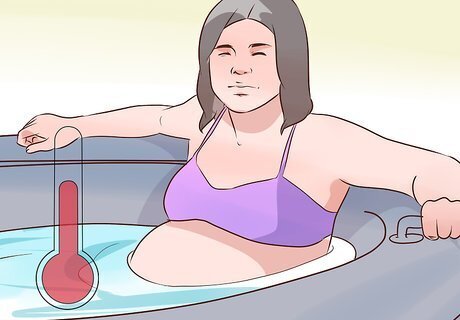
Take a warm bath. Sitting in a warm bath can help you relax your body and release tension in your muscles. Make sure the water is not so hot that your skin turns red. You don’t want to stress the baby with excessive heat.

Try visualization. Sit in a meditative state and imagine the start of the birth process. Breathe deeply and visualize your contractions starting. Visualize your cervix dilating. Imagine your baby moving further down your body to the birth canal. Search online for an audio meditation for inducing labor. These are often available as downloadable mp3 tracks. They may also be available by searching for “hypnobirthing,” which uses similar techniques to sustain you throughout the entire natural birthing process.

Have a good cry. Crying can release tension in your body, which can help your body relax enough to bring on labor. This point in your pregnancy can be a very stressful time, so give yourself the opportunity to cry it out. Grab a box of tissues and watch a good tearjerker movie to get the tears started if you need to.
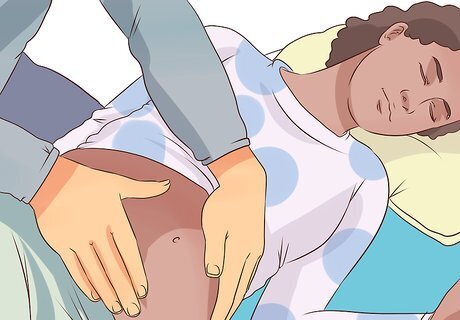
Get a massage. Getting a relaxing massage can be a great way to help your body stay calm. Make sure your massage practitioner is knowledgeable about giving prenatal massage. When you are getting your massage, lie down on your left side with a pillow between your knees to support your body.
What to Expect from a Professional
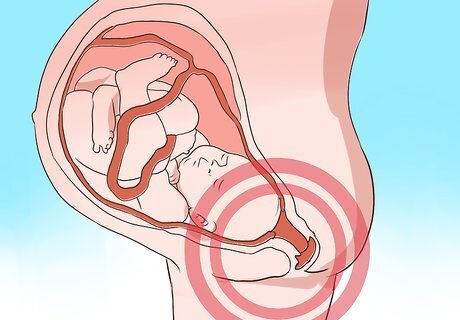
Know when a would doctor will induce labor. If you are committed to a home birth, you should still have a doctor or midwife present. Most doctors will not rush to induce labor unless there are extenuating circumstances, including when: Your water breaks, but there are no contractions. You are two weeks past your due date. You have a uterine infection You have gestational diabetes, high blood pressure, or not enough amniotic fluid. There is a problem with the placenta or baby's positioning/growth.
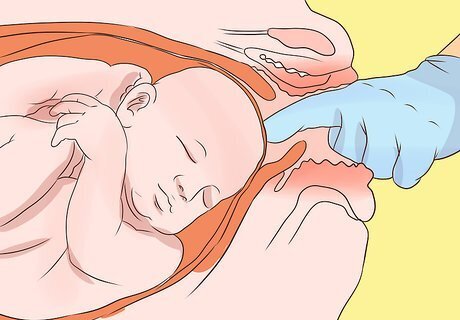
Expect the doctor's first action to be to strip the membrane from the amniotic sac. With gloved fingers, the doctor will reach into the cervix and rub the membrane of the amniotic sac until it separates from the uterine wall. Naturally-released hormones then usually kick-start labor.
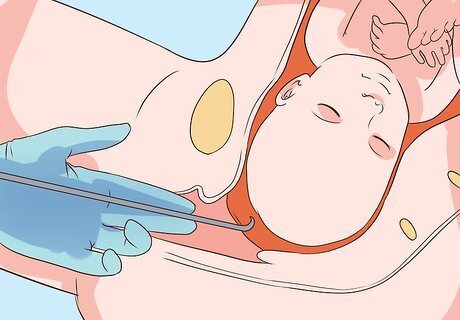
Expect the doctor to potentially break your water manually. Known medically as an "amniotomy," the doctor uses a thin hook to break the amniotic sac. This almost always brings on labor within a few hours. While it is short, this may be painful and uncomfortable.

Prepare to be prescribed prostaglandin, a natural hormone. It may be applied directly to the vagina or taken orally. This usually happens in a hospital, and it thins out the cervix to prepare it for labor. This often leads to strong cramping and some pain.

Expect to be prescribed oxytocin through an IV at the hospital. This is generally for slowed or stalling labor. In emergencies, like those outlined above, it can also help induce labor. Labor induced with oxytocin often leads to more frequent contractions.
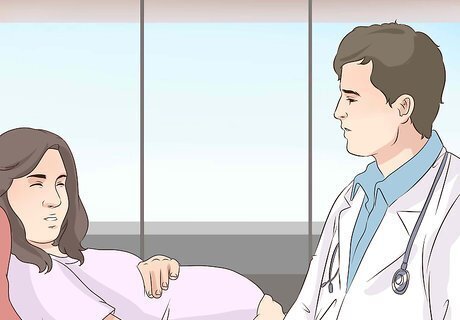
Understand the risks of inducing labor. These strategies do not always work, especially if the body is not quite ready to go into labor. If you've tried to induce labor and it failed, it is imperative to get to a medical facility. The following risks and precautions should be carefully minded: Infection (especially if water has broken) Tears in the uterine wall Late pre-term babies (beginning labor prematurely) Irregular contractions.
When to Seek Medical Care
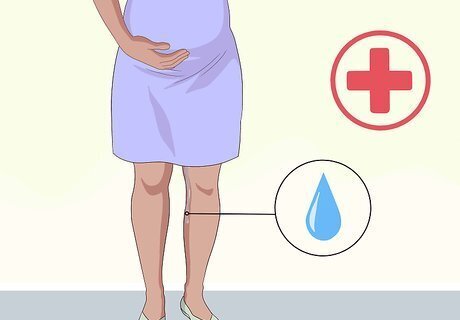
Get to the hospital if your water breaks. When you go into labor, you need to get to the hospital immediately. A sure sign that you’ve started labor is your water breaking. When your water breaks, call your doctor and start heading to the hospital. When your water breaks, your baby is exposed to the outside environment and is at risk of infection. Go straight to a hospital. You should start to feel contractions after your water breaks, but if you don’t you still need to go to the hospital to make sure everything is okay.

Go to a doctor if you fall or injure yourself. Physical activity like walking or galloping is great for naturally promoting labor, but you could possibly injure yourself or fall down. If you do, you need to get to a doctor as soon as possible to make sure your baby is okay. A small injury like a twisted ankle shouldn’t require medical care, but call your doctor to be sure. If you do fall down on your belly, don’t panic. Go to the hospital to get checked out. Stay calm so you don’t stress your baby.
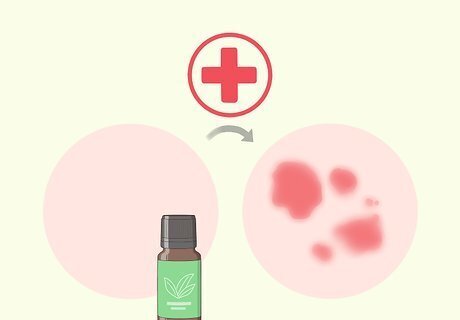
Seek emergency care if you have an allergic reaction to herbal treatments. Even the mildest of herbs can cause adverse reactions in some people. Because you’re pregnant, you need to take extra precautions if you have a negative reaction to an herbal treatment. Go straight to the hospital if you have an allergic reaction. Even mild symptoms like hives, itchy eyes, or splotchy skin can be harmful to your baby. Serious symptoms of an allergic reaction include nausea, vomiting, diarrhea, low blood pressure, and asthma-like wheezing.

Talk to your doctor if you experience anxiety or depression. You may be worried or depressed about going into labor. Your doctor may be able to help you cope with the road ahead of you or provide assistance to help stimulate labor. Don’t keep your negative feelings to yourself, reach out to your doctor and tell them what’s going on. Your doctor may refer you to a psychiatrist who can help you cope with your issues. Depression is a common symptom during pregnancy, so you’re not alone in feeling this way. Many symptoms of depression or anxiety will go away after you deliver your baby.


















Comments
0 comment